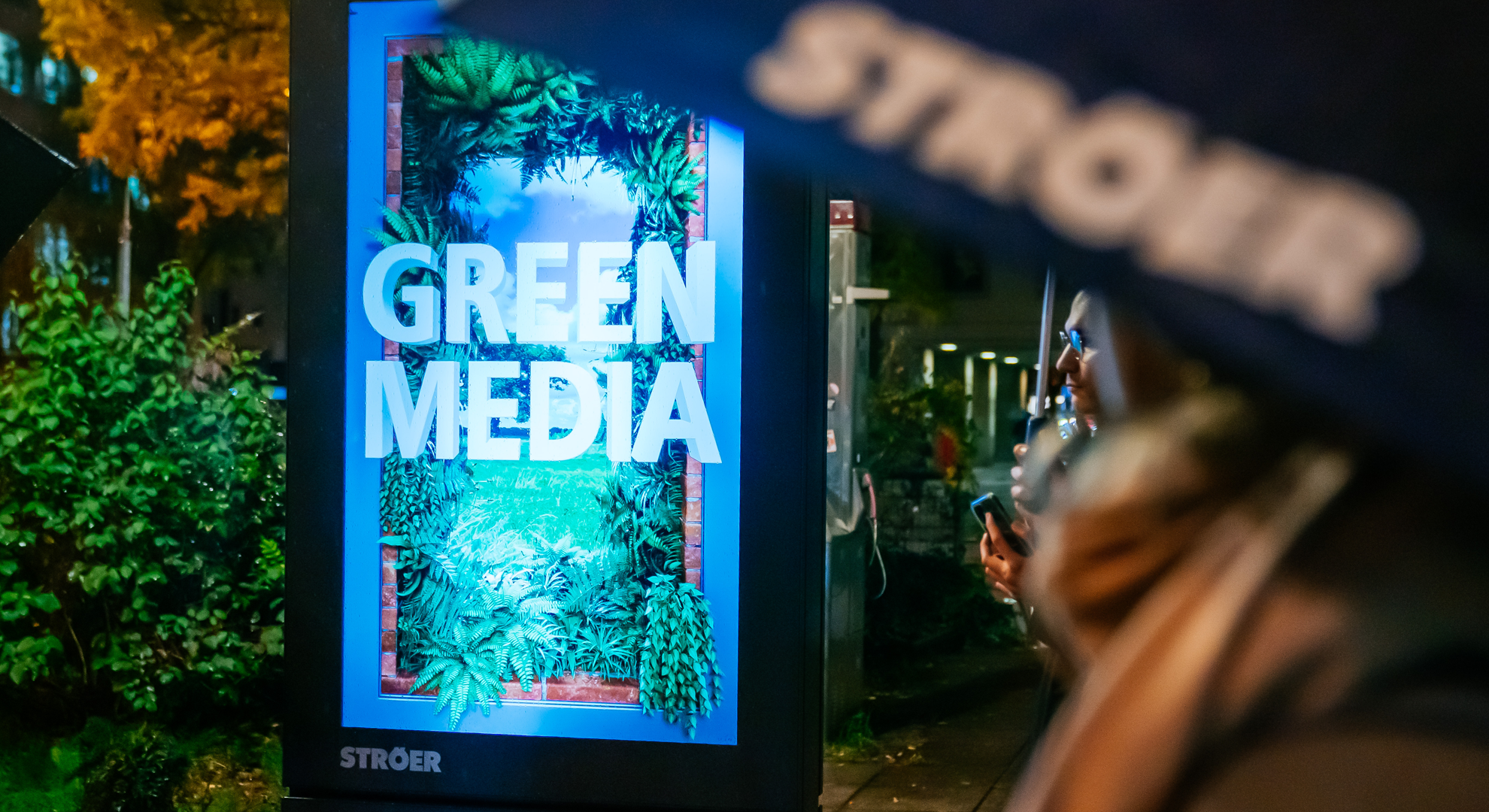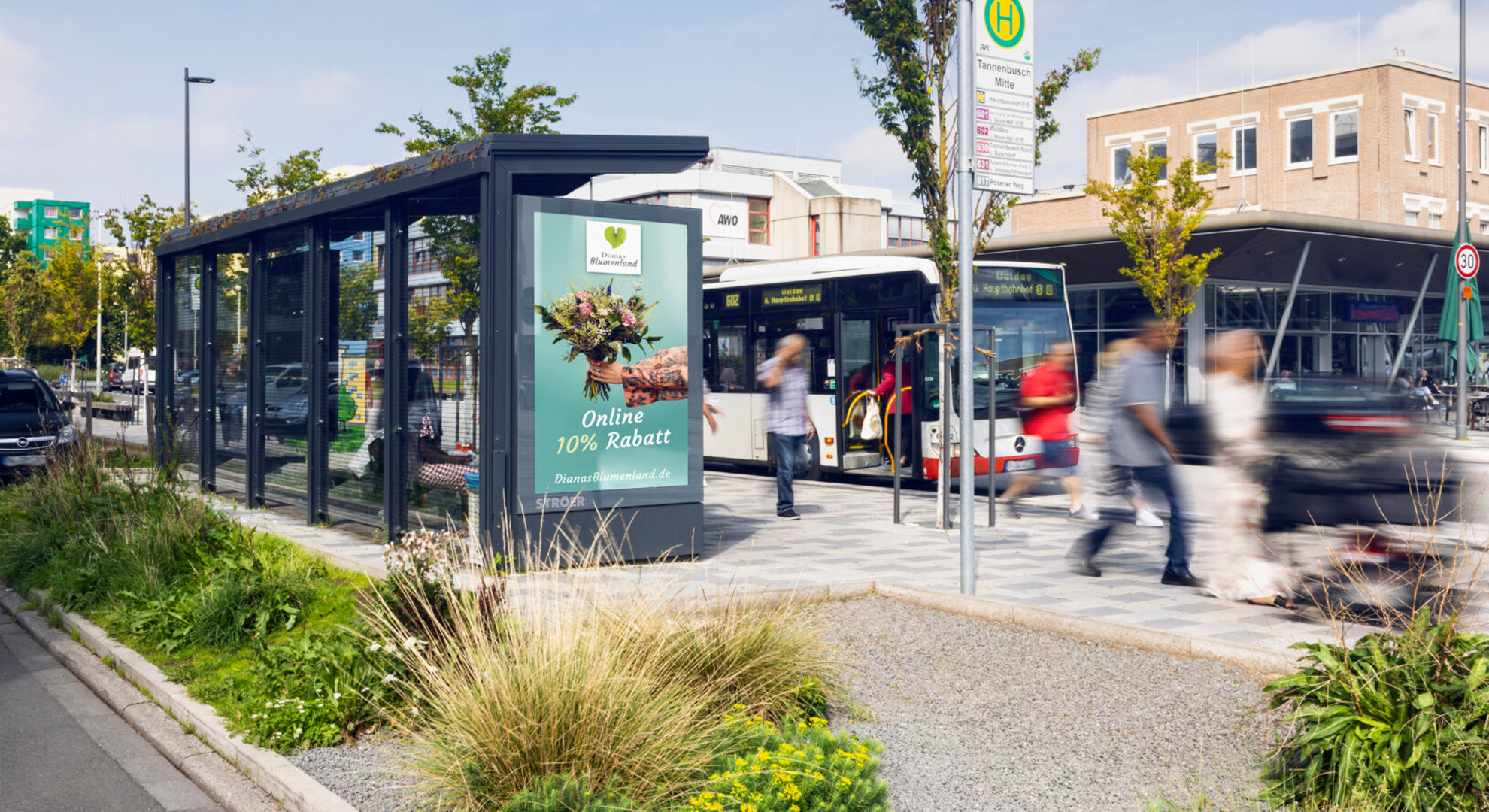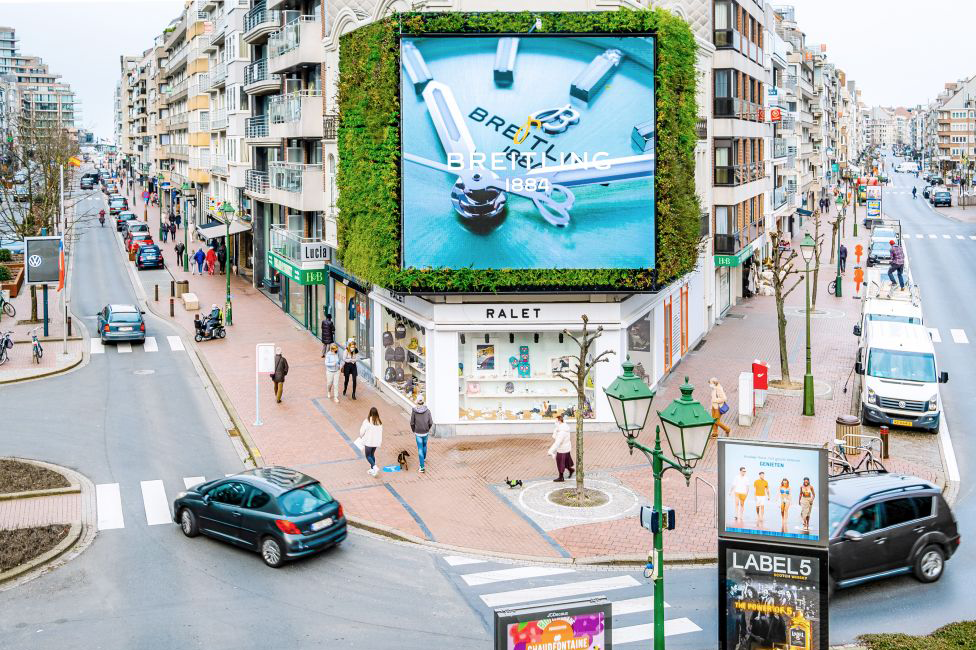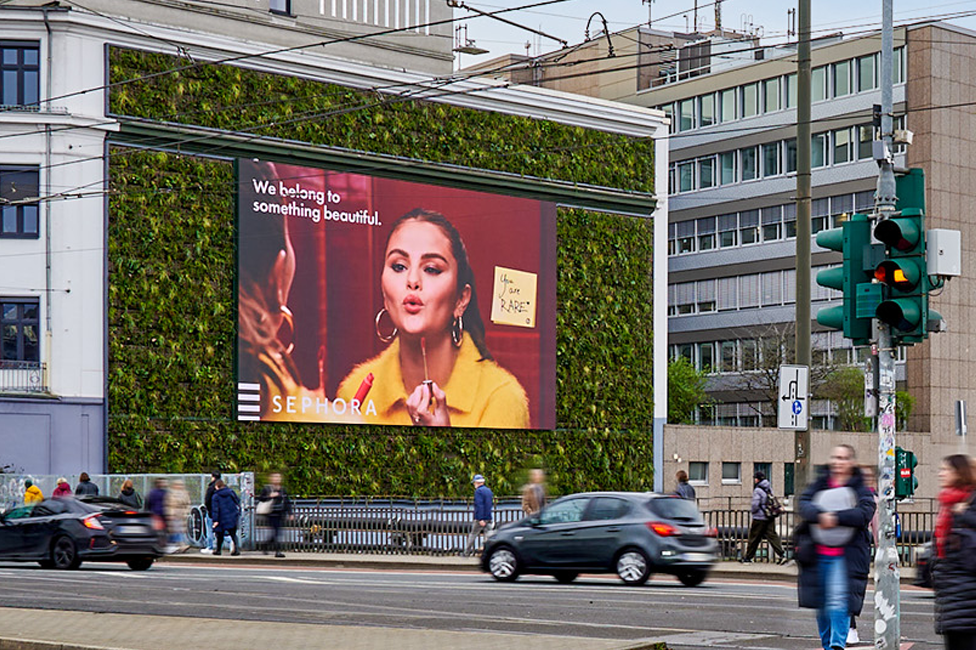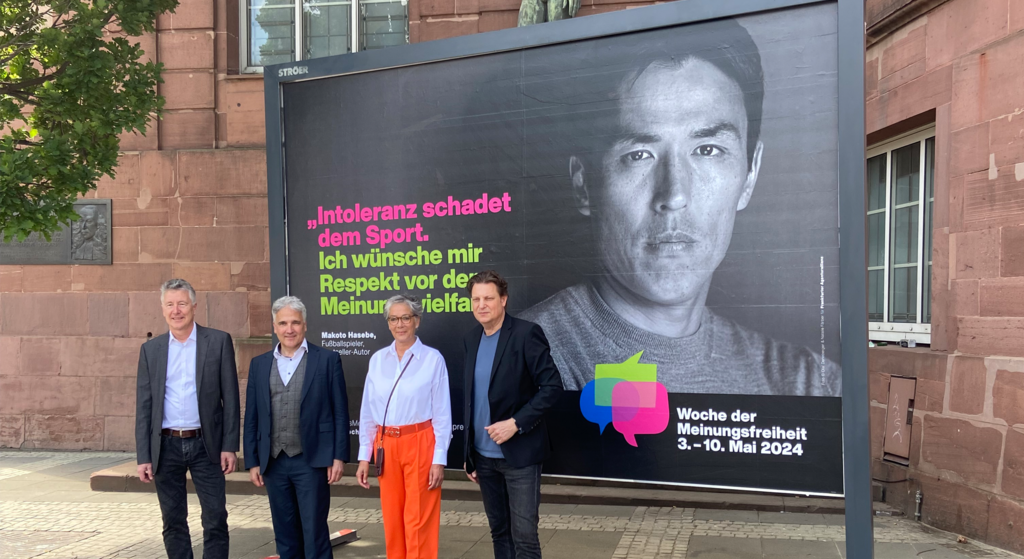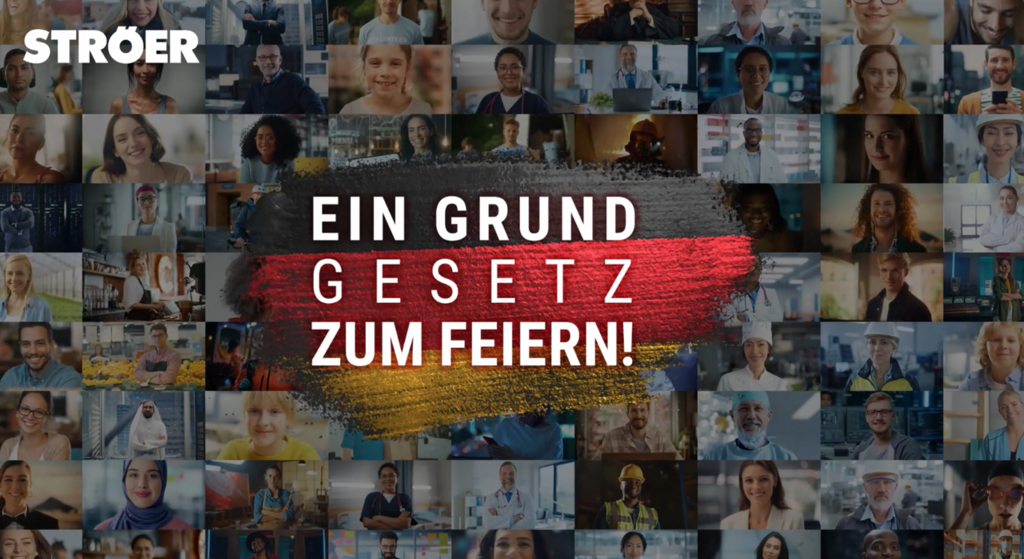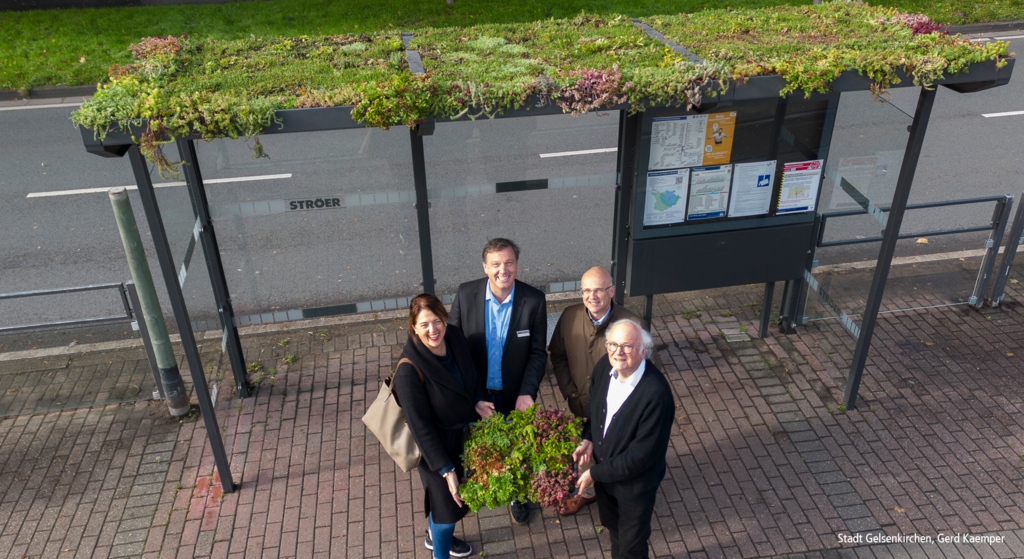Ströer wants to play its part in achieving the UN's 1.5-degree target and is reorganizing its business activities accordingly. We want to achieve net zero by 2050 and significantly reduce our greenhouse gas (GHG) emissions by 2030. This involves reducing our energy requirements and the associated GHG emissions, switching to renewable energy sources, and purchasing climate-friendly goods and services. The focus here is on the areas of out-of-home media, fleet & business travel, sustainable offices and employee commuting. Ströer also aims to make its entire business climate-neutral by 2025. We will fully offset any GHG emissions that cannot be avoided by then with certified climate protection projects.
The focus of improving the environmental friendliness of the out-of-home advertising portfolio is on the digitalisation of out-of-home media. Our aim is also to support cities in resilient, environmentally friendly urban development. Greening concepts are therefore also an integral part of Ströer's sustainability strategy and municipal cooperation.
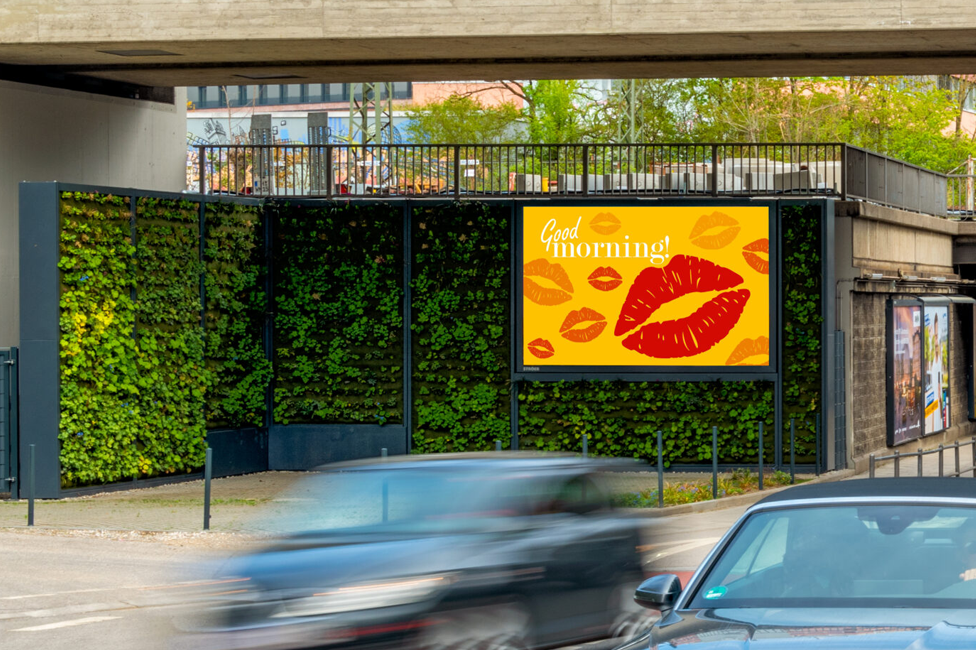
Improving the environmental footprint of the OOH portfolio
The focus of improving the environmental footprint of the out-of-home advertising portfolio is the digitalisation of media displays in public spaces. The outdoor advertising industry has been working on increasing efficiency and saving energy for many years. In addition to the already low relative electricity consumption, the proportion of green electricity used to operate the digital OOH advertising media infrastructure has increased significantly in recent years, meaning that digital out-of-home media in Germany is largely supplied with electricity from renewable energy sources. We aim to operate our business model as efficiently and therefore as resource-efficiently as possible. For example, we have worked on the use of improved LED technology, individually controlled screen brightness depending on the surrounding light conditions, shutting down the devices at night, and adjusting the colour contrasts. These and other measures not only reduce power consumption but also significantly increase the service life of digital advertising media.
Climate-neutral campaigns
Sustainability
A new KPI in the media mix
Sustainability is rightly a key topic. In recent months, there has been an increase in sensitivity in dealing with it. Consumers are also more enlightened and more discriminating. Richard Offermann, SVP Client Sales at Ströer Media Solutions, explains in his commentary why companies would do well to address this issue at both product and company level.
Out-of-home advertising - especially DOOH - is one of the lowest-carbon media in the media mix in relation to the contacts reached. Ströer also maximises efficiency by using green electricity for all DOOH media in Germany. All campaigns for advertising customers are climate-neutral. The company's goal is to be completely climate-neutral by 2025. Ströer always prioritises the avoidance and reduction of CO₂ emissions as part of its Group-wide sustainability strategy. CO₂ emissions that cannot be avoided are fully offset with certified climate protection projects.
In recent years, Ströer has significantly increased the proportion of green electricity used to operate its OOH advertising media infrastructure and supplies all digital out-of-home media (public video/DOOH) in Germany with 100 per cent green electricity - i.e. electricity from renewable energy sources. This means that only 5 to 7 grams of CO₂ are emitted for 1,000 DOOH contacts. Outdoor advertising is a "one-to-many" medium - one media carrier reaches many people at once. With other media, the emissions are many times higher. Sustainability will continue to play a growing role in society and the economy, making low-emission communication increasingly important. For every advertiser that prioritises OOH or DOOH in the media mix, this means a reduction in the carbon footprint of their own advertising campaign.
We offset the remaining CO₂ emissions generated by the advertising measures - for the operation of data centres and upstream processes such as logistics and paper consumption (including printing) as well as disposal and a levy from the corporate carbon footprint (CCF) - by supporting certified climate protection projects via ClimatePartner. However, our top priority is always to avoid and reduce CO₂ emissions as part of our Group-wide sustainability strategy.
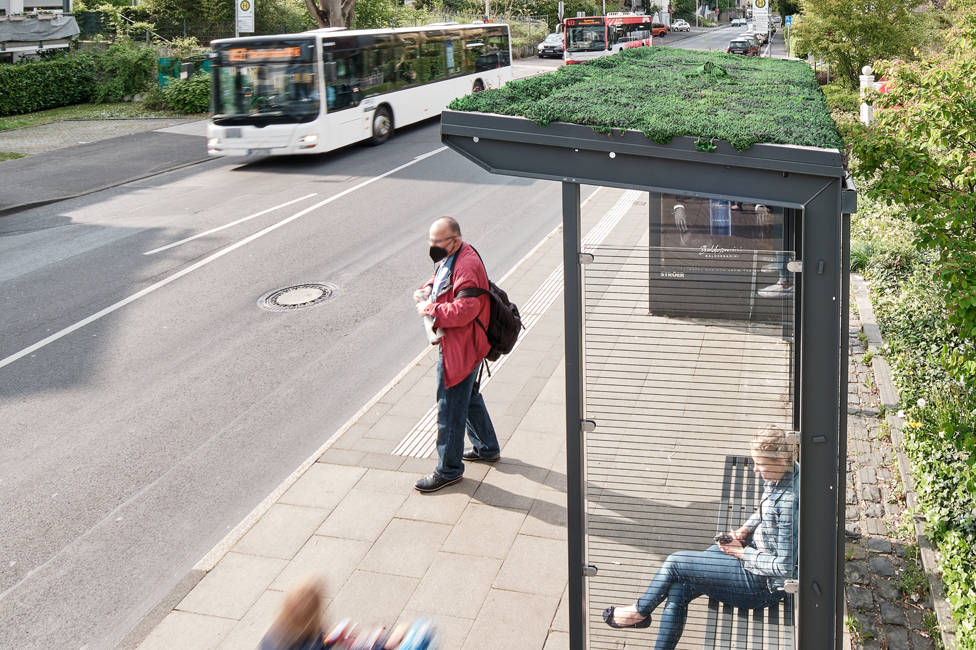
Greening concepts
The greening of street furniture is an important component in the further development of infrastructure. In the coming years, the number of green bus shelters and pillars is to be continuously increased, making a visible contribution to improving the quality of life in cities.
The green street furniture serves as biological stepping stones, providing micro-habitats for insects and plants. To this end, the bus shelter is equipped with a drainage foam mat made of recycled material and a substrate layer of pumice stone and planted with various sedum and plant species in the interests of biodiversity. Sedum belongs to the thick-leaved family and is also known as "stonecrop". The different species bloom at different times of the year, so that the green roof can provide food for insects until late in the autumn. Other biotope elements such as lava rock or dead wood provide further food and nesting opportunities for various insects. The thick fleshy leaves of sedum species store water and cool the air through evaporation. Despite storing water, the roof planting remains relatively light: at maximum water saturation, it only weighs around 50 kilograms per square metre. Plants can also reduce air pollution by binding particulate matter and CO2. Scientific studies have shown that green spaces along inner-city streets reduce air pollution by up to 30 per cent.
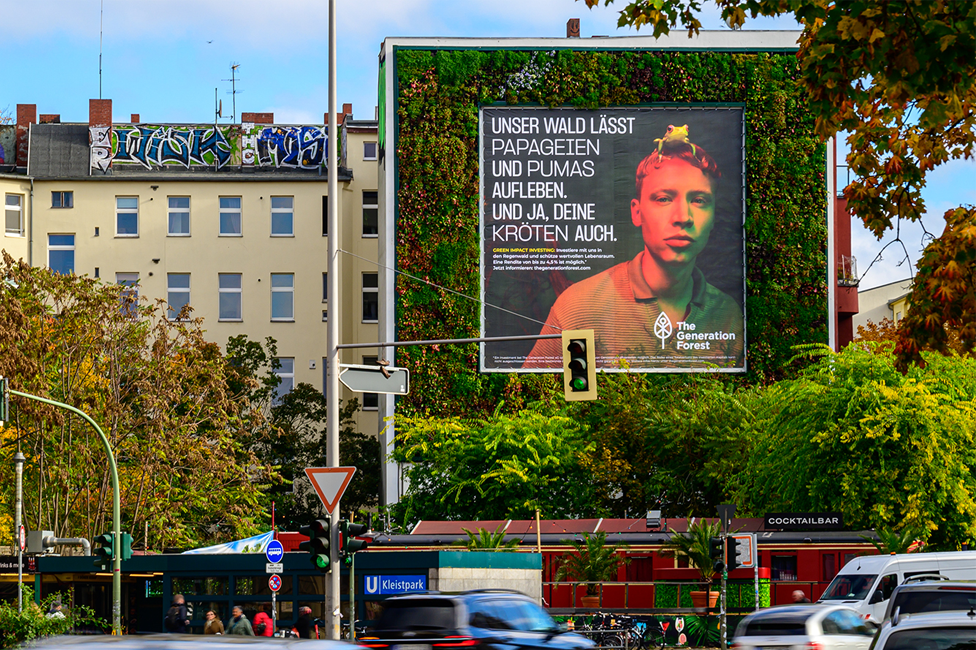
Vertical gardens
In several cities in Germany and Belgium, blowUp media, a subsidiary of the Ströer Group, has already planted large, vertical "green gardens" with various types of plants. Embedded in these are digital screens, mostly powered by green electricity, which are available to advertisers and partners.
In Berlin, Düsseldorf, Munich (Germany), Knokke, and Antwerp (Belgium), such innovative green media locations are helping to improve air quality in the cities, while at the same time minimizing the carbon footprint and creating a green framework for brands.

Green Voice
With the sustainability channel "Green Voice", we have been bringing sustainable content to our digital media platforms and thus to the public space since 2021. The idea behind the channel is not "only" to play out news that revolves around the topic of sustainability, but to present concrete projects and let experts from science, the #NextGeneration, and many other areas have their say with their diverse opinions and assessments. All those who are committed to our environment, the climate, and greater social justice as well as all sustainable developments daily.

